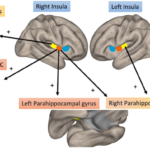 Avoidable Hospitalizations in Patients with RA
Avoidable Hospitalizations in Patients with RA
By Dani G. Contreras, MSc, & Cheryl Barnabe, MD, MSc, FRCPC
Why was this study done? People with rheumatoid arthritis (RA) may be at a higher risk for hospitalizations due to the consequences of systemic inflammation. Health service availability may also factor into the risk for hospitalization. People who may not have access to high-quality primary care may require admission for ambulatory care sensitive conditions (ACSCs), many of which reflect comorbidities associated with RA. This study aimed to estimate the rates of these avoidable hospitalizations among those with RA, compared with the general population.
What were the study methods? We conducted a retrospective cohort study using population-level administrative data in Alberta, Canada (population ~5 million people), from 2007–23. We compared hospitalization rates for ACSCs in persons meeting the case definition for RA (determined using International Classification of Diseases codes), compared with matched controls. The ACSCs included grand mal seizures, chronic lower respiratory diseases, asthma, diabetes, heart failure and pulmonary edema, hypertension and angina. We estimated incidence rate ratios for all seven ACSCs combined and for each individual ACSC, adjusting for age, sex and primary location of residence. We used a Cox proportional hazards model to identify predictors for these avoidable hospitalizations.
What were the key findings? Compared with the control population, people with RA had an 11% higher risk of avoidable hospitalizations at three years from the time they were diagnosed and a 14% higher risk at five years after diagnosis. They were specifically at a higher risk of being hospitalized for heart failure and pulmonary edema, compared with those without RA. We found that increasing age, prolonged exposure to glucocorticoids and having comorbid conditions, especially if the condition is considered an ACSC, are significant predictors for these avoidable hospitalizations.
What were the main conclusions? People with RA are at a higher risk of avoidable hospitalizations three and five years from the date of diagnosis, compared with those without RA. They are at especially high risk of being hospitalized for heart failure and pulmonary edema, compared with the general population.
What are the implications for patients & clinicians? This study highlights the need for better quality of care for persons with RA, specifically when dealing with comorbidities. We propose improved ambulatory care access and quality for RA patients, inclusive of primary and subspecialty care, to prevent unnecessary hospitalizations and reduce the burden on the acute care system.


